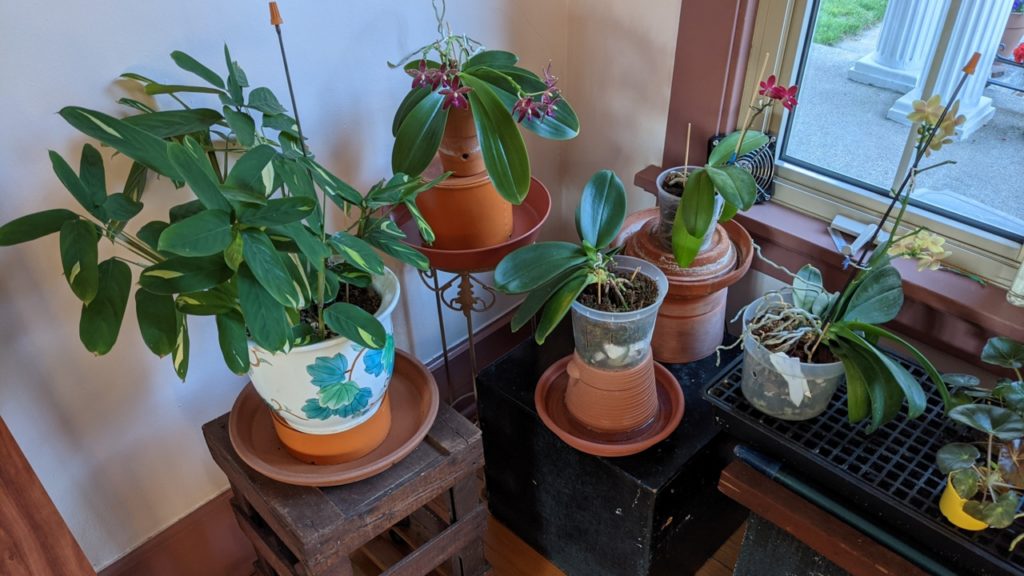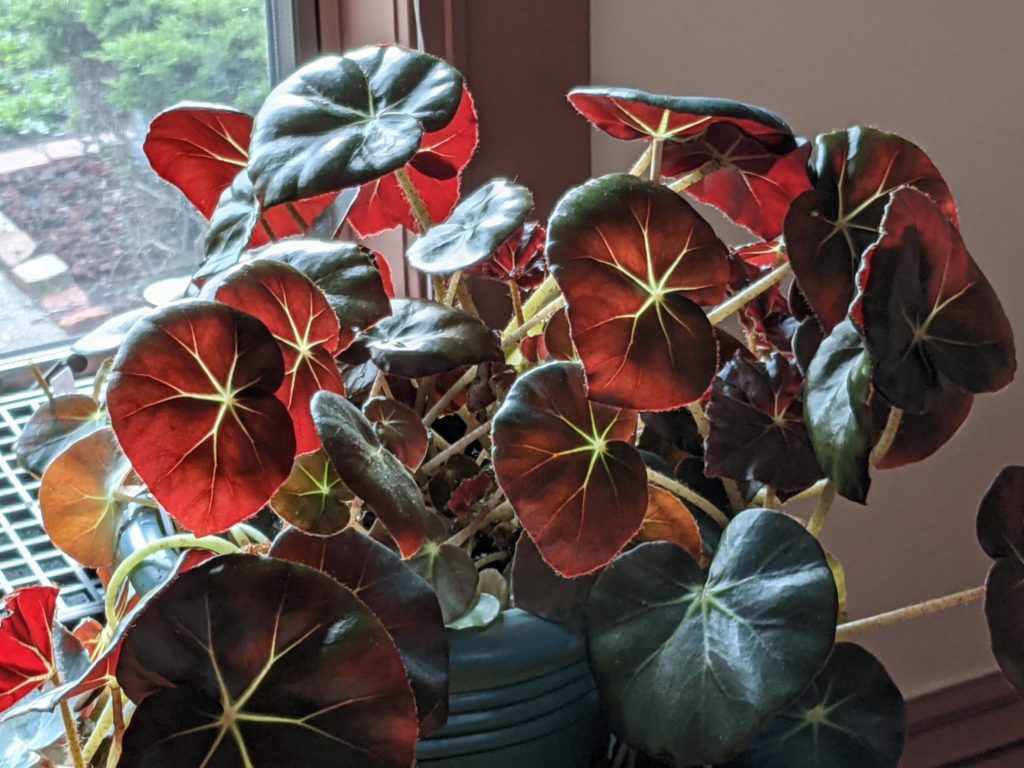
Some time ago, I discovered a tiny, neglected Beefsteak Begonia (BB) that reportedly had been kept indoors, in the same pot, for a decade. Though the pot’s soil was lime caked, I thought the plant had potential.
A Magical Plant
I placed a cutting in water and it quickly rooted. Soon I had a small BB and still later I received many pleasant surprises as suggested by this amazing post:
[The BB] might possibly be the best begonia houseplant available. . . . If you treat it well–bright, indirect light; fluffy and airy soil with steady moisture; a mild dose of balanced fertilizer with trace elements once in a while; and occasional repotting–it will grow into the largest, lushest and most beautiful of specimens. It will be the plant that visitors to your home will comment on and ask about. People will beg for a start. Guests, even those who “know about plants,” will overlook all the other exotic rarities in your home and make a bee-line to check out your beefsteak begonia. This is truly an amiable, heirloom quality hybrid. (Jul 25, 2009, Ispahan from Chicago, IL (Zone 6a), https://davesgarden.com/guides/pf/go/62923/)
Surprisingly the author had not mentioned that when kept in bright indirect light, BBs produce many small beautiful flowers with green, pink, and blue features.
Importantly, when kept in heavy soil, BBs can easily be over watered and suffer root rot! Early on, when this happened, I would cut away the rot, and re-root the remaining plant in water. Of course, I tried to avoid over watering but with mixed success. Over watering is a threat to all house plants; so I was often anxious as I had so killed many plants. I
Better Ways to Water and Grow BBs and Other Houseplants
One day while searching for advice regarding growing orchids, I discovered much horticultural wisdom at “Here But Not.”
Different Soils and Containers for Different Plants
Dustin, the site’s maven, recommends potting a plant in soil appropriate to its water needs. So, a plant like a Pothos might be kept in less porous soil than a plant like a BB which benefits from fluffy, sandy soil. By so adjusting the soil, Dustin reports watering all his plants on the same day!
Related to the type of soil is the size of the container. If a container is too large, that is, the plant is “over-potted,” then the soil will remain wet for too long and promote root rot. So, I keep a plant in a container not too much larger than the plant’s root ball. Sometimes, I reduce the functional size of container by placing pieces of styrofoam, other non-porous materials, or stones on the container’s floor. Stones also enhance a container’s stability, especially if the container is made of light plastic.
When to Water?
I use a wooden skewer as a dipstick and keep the skewer deep in the soil. From time to time I remove the stick and feel if its tip is dry by touching the tip to my upper lip. If the tip is dry then I water. Of course, if a plant’s roots are healthy then its limp leaves also indicate it needs watering.
Water in the Reservoir
When watering, Dustin also recommends drenching the soil to clear mineral accumulations such as calcium. But to where will all that water drain? Must you carry each houseplant to the sink?
My watering technique requires a deep saucer and a platform as illustrated in Figure 1. The deep saucer functions as a reservoir to contain the overflow from drenching the soil. The platform, here an inverted saucer, keeps the plants container safely above water.
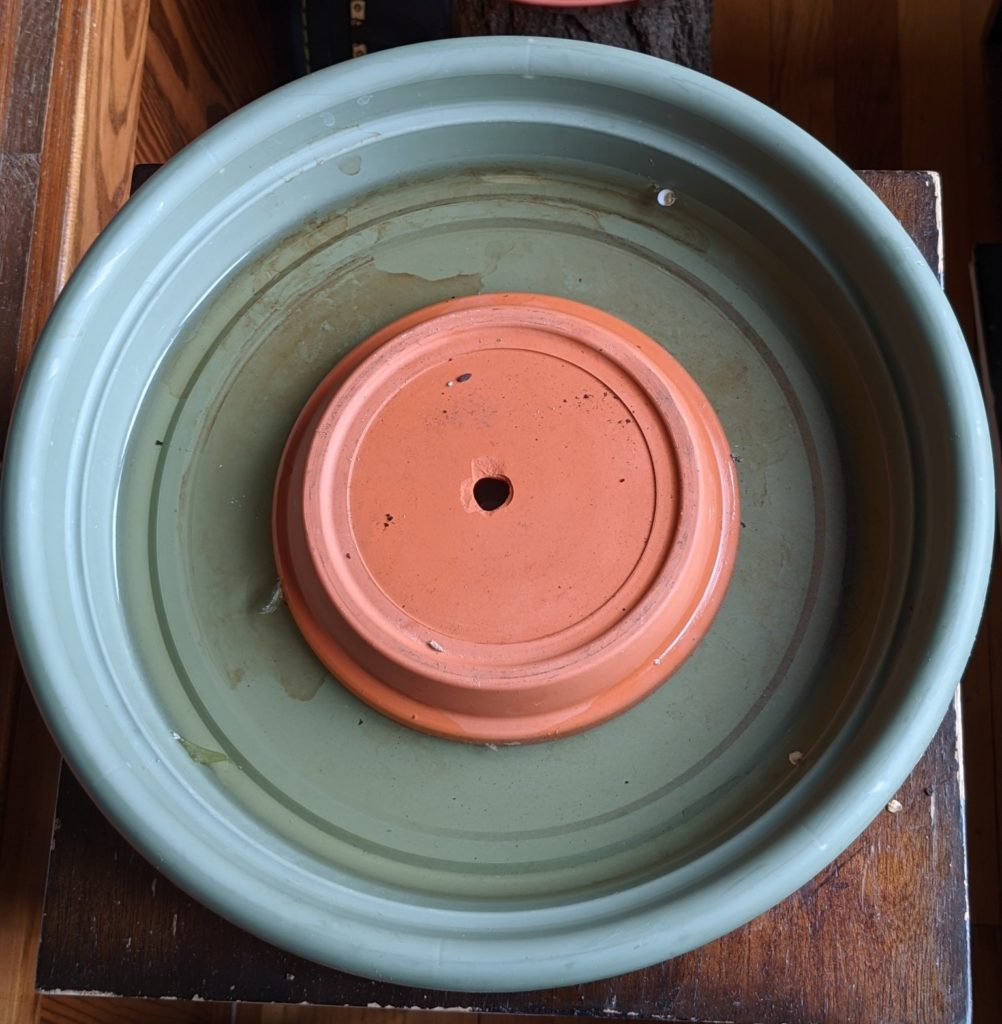
The saucers above are resting below the BB as shown in Figure 2.
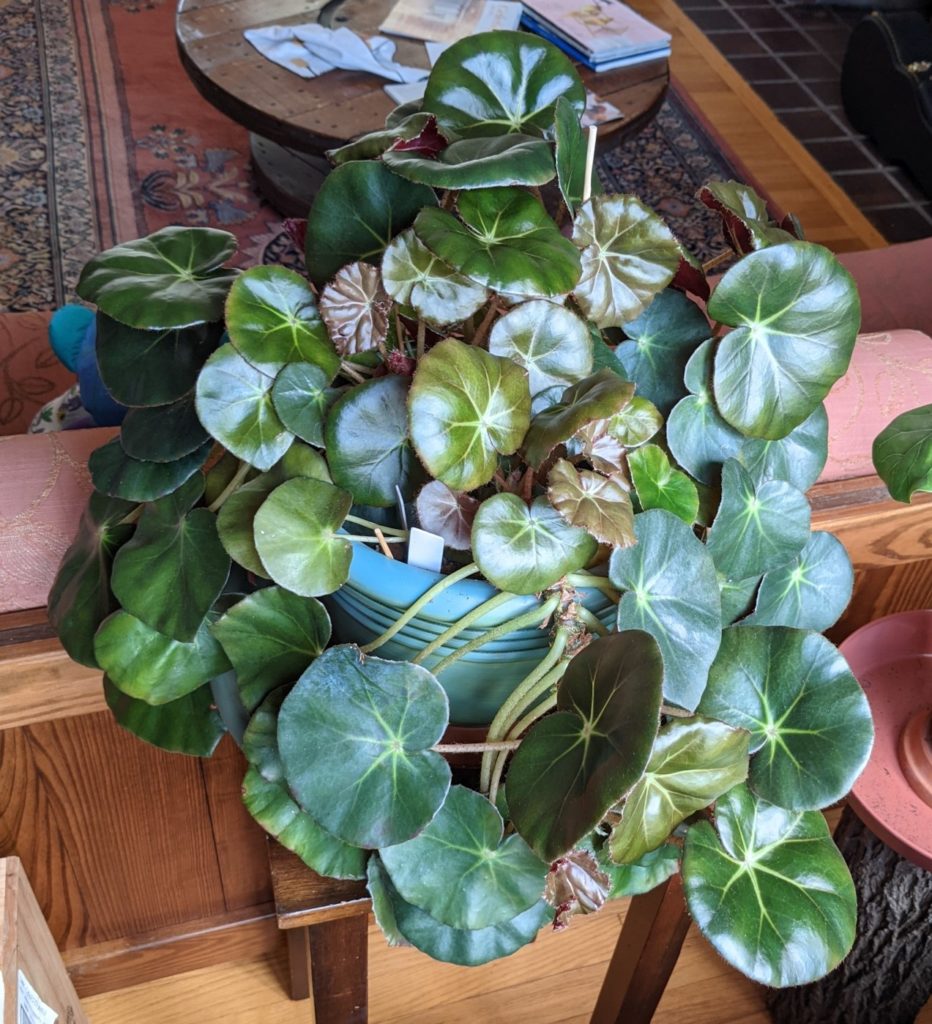
My Bamburanta is clearly resting on an inverted terracotta saucer that has been set in a large terracotta saucer as shown in Figure 3.
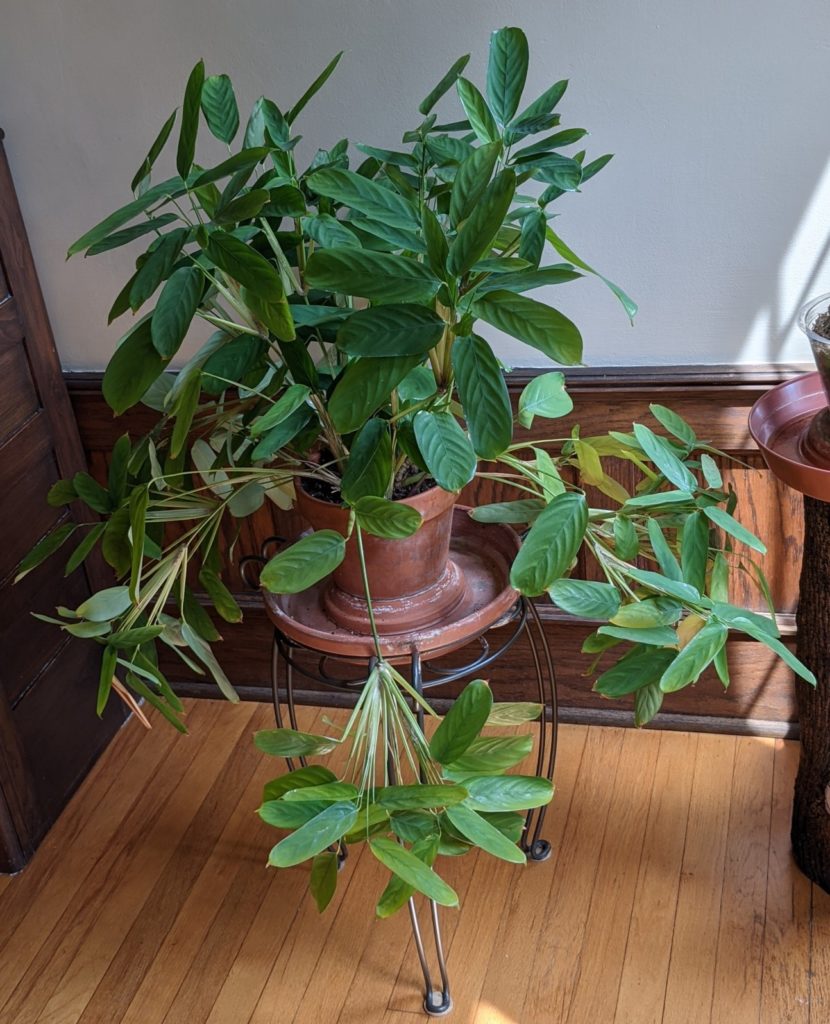
Of course the platform need not be an inverted terracotta saucer. Figure 4., below, reveals delightfully fragrant Phaleanopsis cornu-cervi var. chattaladae. It is resting on the top two-thirds of a plastic, paint bucket that I had painted orange.
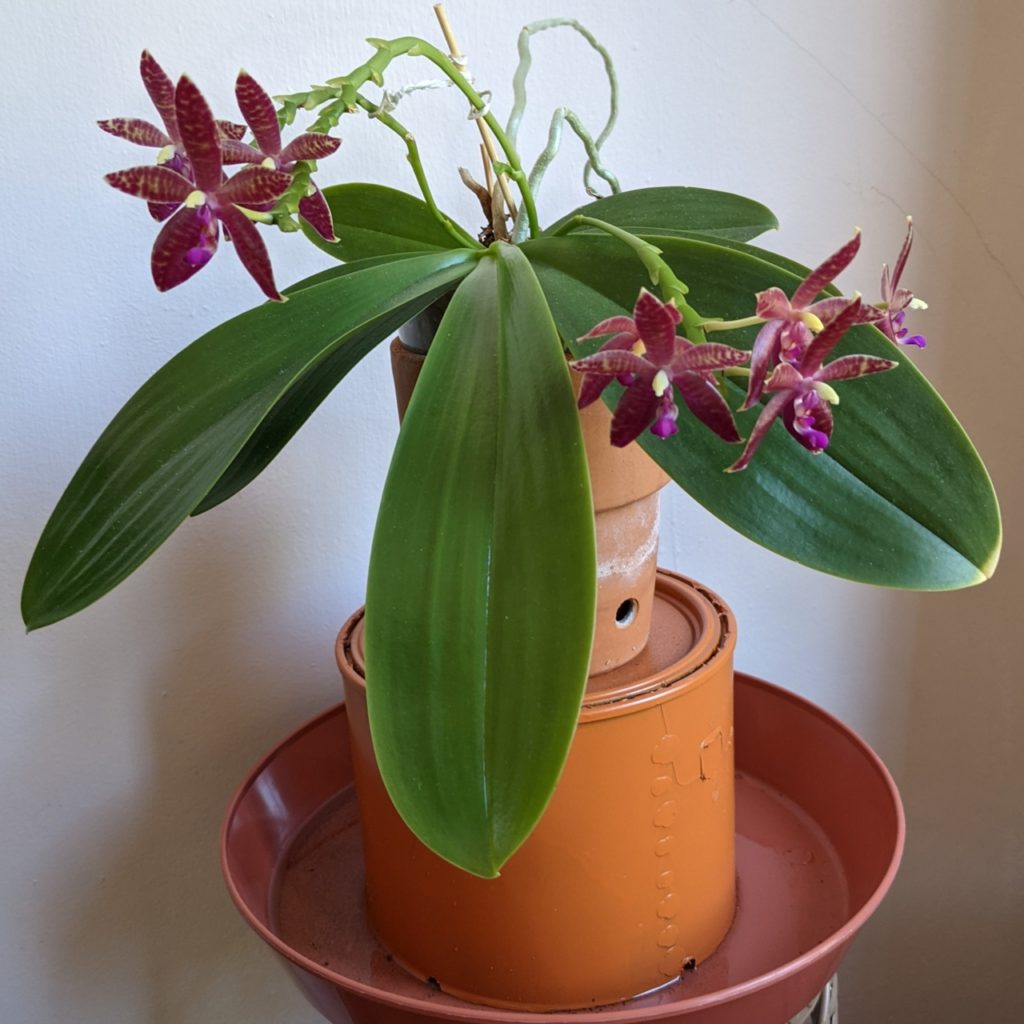
By the way, the 12 inch plastic saucer (10.2 inch base) above was manufactured by Beloit Plastics. Early in 2021, I had purchased a case of ten for $20.58. The company manufactures containers and saucers of various colors and sizes.
A plant ensemble, including a Variegated Bamuranta, appears in Figure 5. The Bamuranta, far left, is resting on the remaining one-third of the painted, plastic paint bucket.
